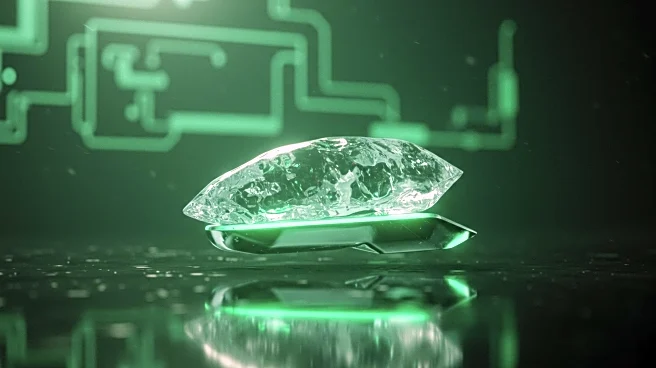What's Happening?
Researchers at Virginia Polytechnic Institute and State University have discovered a method to make ice move independently on a metal surface etched with an asymmetrical herringbone pattern. This innovative approach involves directing the flow of meltwater to propel the ice without external forces such as wind. The study, published in ACS Applied Materials & Interfaces, demonstrates how ice disks can achieve self-propulsion by rectifying the flow of underlying meltwater. The researchers were inspired by the natural phenomenon observed at California's Racetrack Playa, where boulders move across the dry lakebed due to ice rafts pushed by the breeze. However, in this study, the ice moves without any external forces. The team experimented with water-repellant spray on the herringbone pattern, which unexpectedly caused the ice to remain stationary due to the meltwater being squeezed out easily.
Why It's Important?
This discovery has significant implications for energy generation and rapid defrosting technologies. The ability to control the movement of ice through surface patterning could lead to new methods of harvesting energy. For instance, if the surface structure were patterned in a circle, the melting object could rotate continuously, potentially driving magnets for power generation. This research contributes to the exploration of alternative energy sources, which are increasingly vital in the context of global energy demands. The study highlights the potential for innovative engineering solutions to address energy challenges, offering a glimpse into future applications that could transform energy harvesting techniques.
What's Next?
The researchers suggest further exploration into the applications of this technology, particularly in energy generation. By refining the surface patterning and integrating magnets, the self-propelling ice could be harnessed for practical energy solutions. The study opens avenues for additional research into the mechanics of self-propulsion and its potential scalability for industrial use. Stakeholders in the energy sector may take interest in this technology as a novel approach to sustainable energy generation, prompting collaborations and investments in further development.
Beyond the Headlines
The ethical and environmental implications of this technology could be profound. As the world seeks sustainable energy solutions, the ability to harness natural phenomena for energy generation presents a promising avenue. This research also underscores the importance of interdisciplinary approaches in solving complex problems, combining principles of physics, engineering, and environmental science. The long-term impact could include shifts in energy policy and increased focus on innovative technologies that mimic natural processes.












